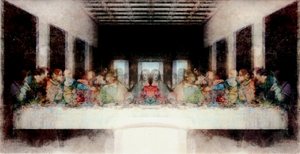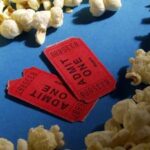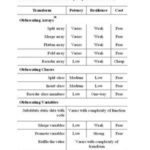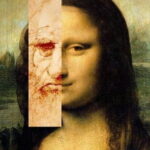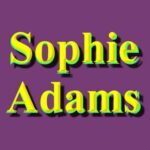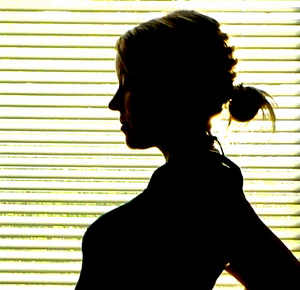The firestorm of controversy over hidden images in Da Vinci’s painting, the “Last Supper”, continues to rage as new ,startling (2007) imagery is revealed through digital compositing and computer enhancements. You be the judge as you examine these images prepared and presented by the author for your scrutiny.
The images here were derived by superimposing the original image of Da Vinci’s “Last Supper” with a mirror image of the painting. Each layer is set at 50% opacity. A moderate application of filters were employed to enhance clarity and contrast. No additional drawing, painting or manipulation of or the shape, shading or colors of the images were added. Did Da Vinci Code his Paintings with Hidden Imagery?
The theory supposes that Da Vinci, who often wrote in his notebooks using a mirror image or reversed manual script, employed a similar technique to place encoded clues in his paintings to convey secret messages or meanings. In Leonardo’s day, it would have required a specially constructed apparatus to view a superimposed mirror image. Such a device would have perhaps used mirrors, lenses and/or prisms, items which were available in that era, often referred to in that location as the Italian Renaissance.
Those familiar with author Dan Brown’s book, “The Da Vinci Code” may recall references to the Knights Templar, a monastic order established during the Crusades. A figure at the far right (and left) of the composited painting appears to resemble an armored knight, swathed in a royal-purple cloak. His arm, clad in a silver gauntlet is raised to his chest as if in a roman-style salute.
In another superimposition, some see a male figure cradling a baby in his arms. In the original, the male figure is identified by Leonardo himself as the Apostle Phillip. (Notebooks of Leonardo Da Vinci, p.232). It is interesting to note that the figure more recently conjectured to be Mary Magdalene was denoted by Leonardo’s in his sketches as actually depicting the Apostle John.
Some viewers report seeing the image of Judas isolated in a fairly empty area of the canvas, signifying his estrangement from the other disciples. Far more viewers, have pointed out a ghoulish apparition over the shoulder of the somewhat obscured original image of Judas.
But to many, the most fascinating image is in the exact center of the painting composite, which has the appearance of a large, wine-filled glass goblet flanked by two small, round loaves of bread. Some, including the amateur scholar Slavisa Pesci suggest that the imagery represents Christ blessing the bread and wine at the first Eucharist.
Does this constitute the basis of a new “Last Supper” theory or just a chance coincidence, like the apparent image of Elvis on a rock? Stay tuned for more developments…
